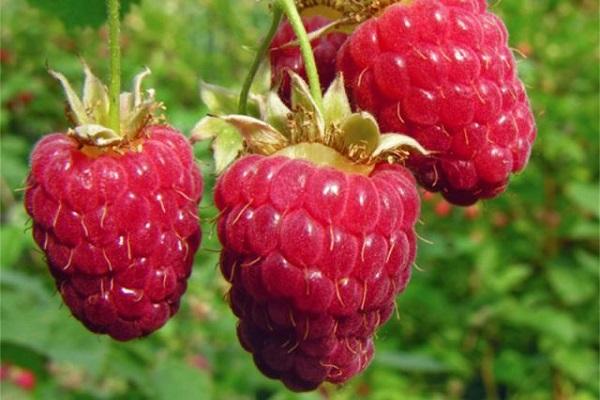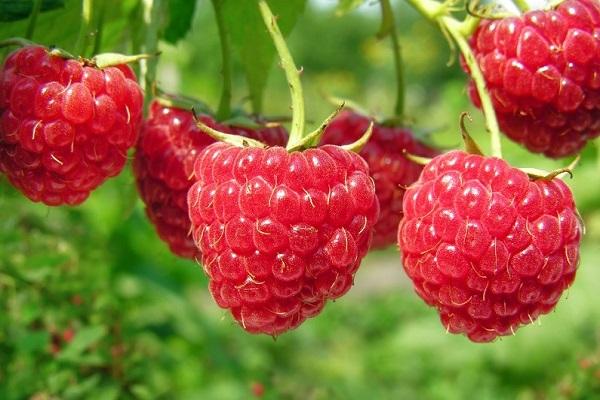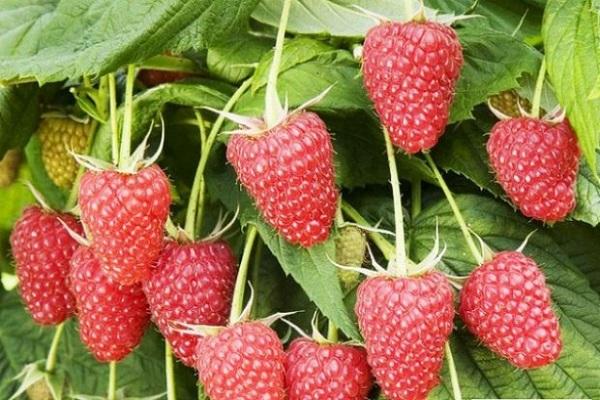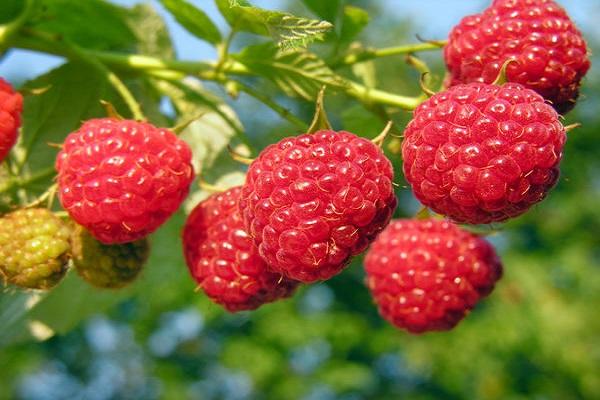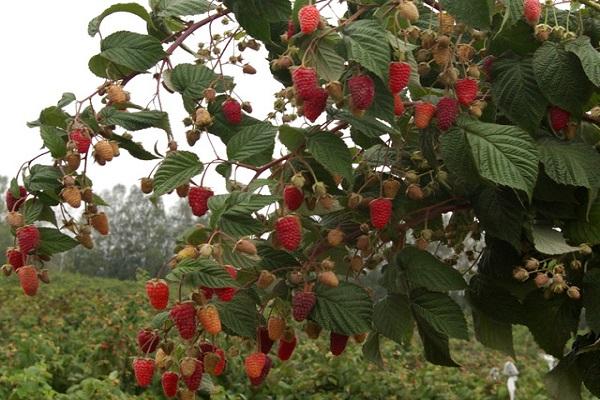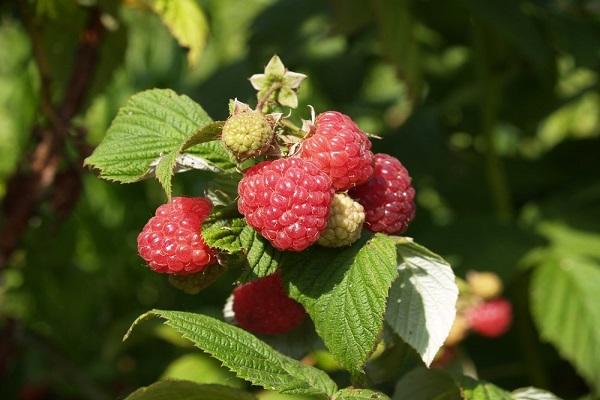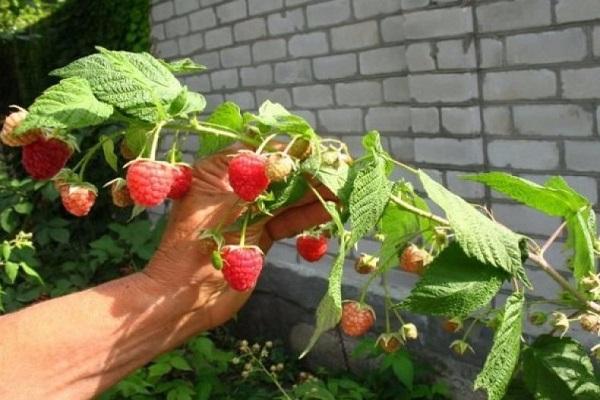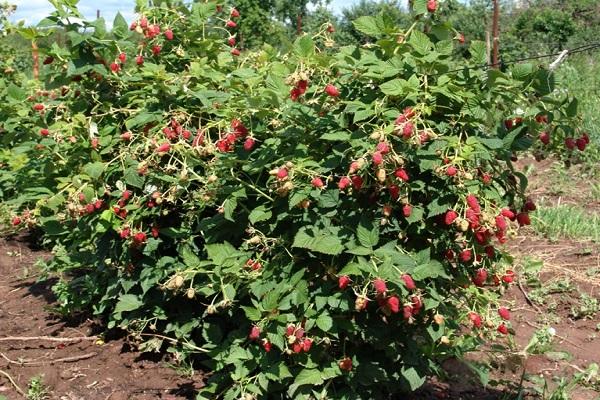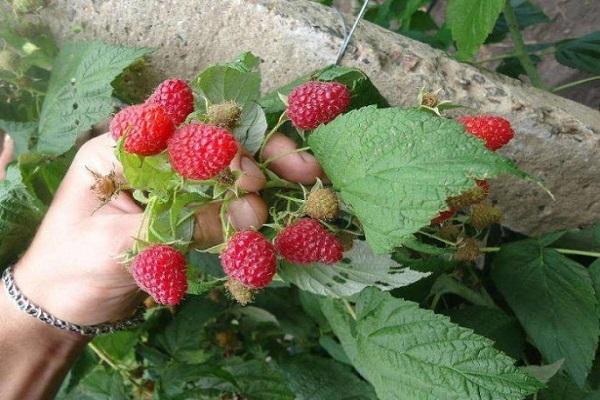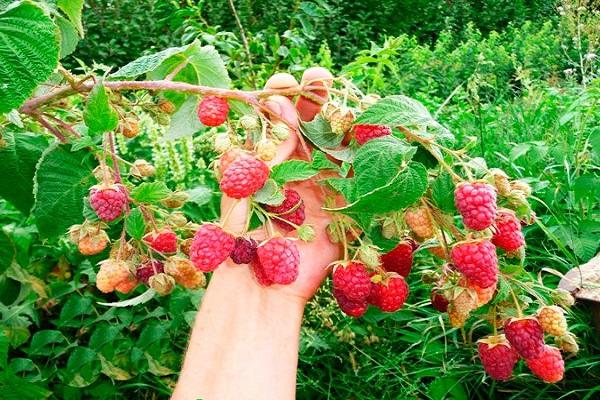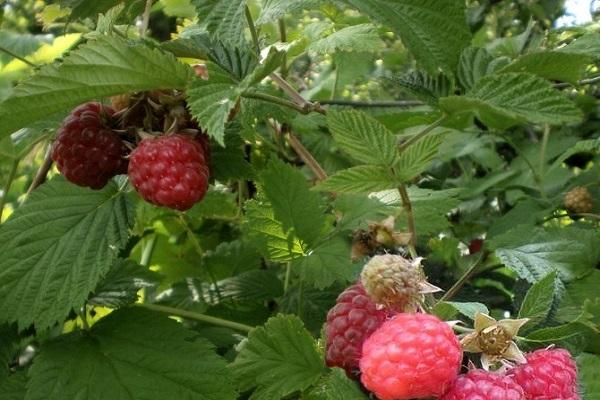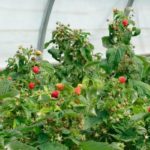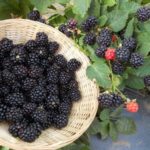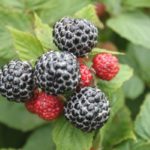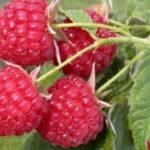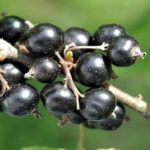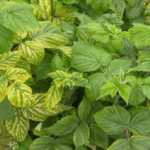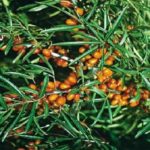Red raspberries are a unique, valuable berry crop, which has thousands of cultivated varieties and dozens of wild ones. Both one and the other with medicinal properties from the roots to the crown with fruits.
- Advantages and disadvantages of red fruit crop
- Varieties of varieties depending on ripeness period
- Early varieties
- Medium ripening
- Late
- Repairers
- Varieties of raspberries with double berries
- High-yielding varieties
- Frost-resistant and winter-hardy
- Large-fruited
- The sweetest and most delicious varieties
- Crops resistant to diseases and pests
- Varieties with good transportability indicators
- New selection varieties
- How to choose the best variety depending on the region
- Moscow region and central zone
- For Siberia and the Urals
- For the Altai Territory
- For southern regions
Advantages and disadvantages of red fruit crop
The varieties of red-fruited raspberries differ in their characteristics from others in the size of the berries, resistance to frost, pests, diseases, the degree of sugar accumulation in the berries and their size, as well as the types, ripening periods and recommended planting regions.
Red raspberries have a number of advantages over yellow and black berries:
- Traditional varieties grow faster.
- Resistant to temperature changes and frosts down to -40.
- Berries have more vitamin C and lower calorie content.
- The taste of berries usually contains sourness.
- The bushes are undemanding to growing conditions.
- It is easy to propagate as it produces good side shoots.
Disadvantages of red raspberry varieties:
- Traditional varieties are less productive.
- Large-fruited red raspberries do not develop side shoots well.
Varieties of varieties depending on ripeness period
Berries are also classified according to their ripening time.
Early varieties
Early raspberry varieties begin to bear fruit from the second half of June until the first ten days of July on old, two-year-old shoots. These include:
- Scarlet sails - the fruit size is small, up to 2.7 g, but frost resistance and yield (up to 2 kg) are high. The shoots are highly branched, but with fewer thorns.
- Bryanskaya - stems are strong, lightly branched. The berries are tasty, medium-sized, up to 3 g. Based on the number of berries collected per season, they are classified as medium-yielding. Average resistance to diseases.
- Lazarevskaya - bushes are distinguished by the height of their shoots, which do not exceed 1.8 m, branched. The berries are larger than average, up to 3.5 g, and up to 2.2 kg are harvested from the bush per season. Not suitable for long-term transport. Does not tolerate severe frosts and requires shelter.Often exposed to diseases.
- Meteor - begins to bear fruit very early, in the second half of June with medium-large berries up to 3 g. Harvest is friendly, up to 2.5 kg. It is almost not affected by fungal diseases and is attacked by pests. Tolerates winter frosts well.
- Kuzmin's news - with an average yield, the variety is characterized by increased resistance to many diseases and pests, sudden temperature changes, and harsh winters.
Also included here are: Novokitaevskaya, Vega, Solnyshko, Michurinskaya dessert, Early dawn, Early surprise, Flame, Early sweet.
Medium ripening
Red raspberries with an average ripening period begin to ripen from the beginning of June until the second half of August; they include mid-early and mid-late varieties, for which the time may shift depending on weather conditions and the region of growth:
- Balsam - tolerates northern winters favorably, the shoots do not rot or dry out. The berries are larger than average, up to 2.8 g, yield up to 2.2 kg. Rarely exposed to pests and diseases.
- Gloria - the bushes are very tall and spreading, strong. The berries are large in size, up to 4 g. The harvest is up to 90 kg per 1 acre. Resistance to diseases and frost is average.
- Shy - compact bushes, thorns are very rarely seen on the branches. Weather changes do not affect the amount of harvest; it is always stable, with medium-sized berries, up to 2.9 g. The main pest is spider mites. It exhibits strong immunity to fungal diseases.
With an average maturity period, the following varietal red raspberries are distinguished: Kaliningradskaya, Vislukha, Glen Prosen, Cleopatra, Glen Ampl, Gloria, Volnitsa, For Zdravie, Gusar, Iskra, Kirzhach, Tenderness.
Late
Ripening of late varieties of red raspberries begins in August:
- Brigantine are compact shrubs from which up to 2.2 kg of large berries, more than 3 g, are harvested. The taste quality received a tasting rating of 4. Winter hardiness and the possibility of infection with diseases are average.
- Rubin is a Bulgarian variety with high taste and characteristics, very large fruits, sometimes reaching 4 g. Fruiting is stable even in the presence of diseases to which there is weak immunity. Winter hardiness is average.
- Companion - with good tolerance and susceptibility to diseases, the bushes exhibit an average degree of resistance to frost, although the fruits reach a weight of 3.5 g and a yield of up to 2 kg.
Peresvet, Mirage, and Stolichnaya ripen later than other varieties of red raspberries, starting in the first or second decade of August.
Repairers
Varieties of remontant red raspberries are distinguished by a long fruiting period and high yield of bushes, as well as a lower incidence of diseases. Thanks to them, you can eat berries throughout the summer and autumn:
- Penguin - ripens from June on compact bushes with large berries up to 5 g, high productivity, up to 2.5 kg per bush. Highly winter-hardy, the main pests and diseases of the Rubus genus almost do not affect.
- Hercules - from August until the first frost, the crop produces up to 80% of very large ripe berries, the productivity of the bushes is up to 2.5 kg. It has high levels of immunity against diseases and pests.
- Kalashnik is a high-yielding plant, up to 3 kg, with unusual taste qualities of medium-sized fruits, up to 3 g. It favorably tolerates frost of -30, dry weather, and major diseases.
Indian Summer, Indian Summer 2, Bryansk Jubilee, Mulatka, Eurasia - remontant varieties with large red fruits.
Varieties of raspberries with double berries
Double berries are a varietal characteristic, but sometimes this phenomenon occurs on bushes with large raspberries or early ripening varieties due to high humidity in the spring or a viral infection:
- Dvoinaya is a late-ripening Belarusian variety, the productivity of the bushes is high, up to 12 tons per hectare, but at the same time weak resistance to frost. The first fruiting produces amazing double berries.
- Giant is a remontant variety with very large berries, up to 15 g, respectively, and the productivity is very high, up to 12 tons per hectare. The peculiarity of the fruit is the formation of double ruby berries of an elongated oval shape.
- Patricia - with large berries, 11-14 g, is not classified as remontant, but fruiting lasts from June to the end of August; up to 5 kg of mature fruits are harvested from one bush per season, sometimes double.
- Volnitsa is remontant, with cone-shaped berries, often fused at the first fruiting, weighing 3-5 g.
Sometimes the berries of the Maroseyka and Krasa Rossii varieties can double.
High-yielding varieties
A high-yielding raspberry variety is one that produces more than 10 tons per hectare. In Russia, raspberry varieties with large fruits and high yields are popular: Penguin, Ruby Giant, Arbat, Anfisa, Golden Giant, Pride of Russia, Award:
- Tarusa - large berries, 7-9 g, cone-shaped, with a pleasant tart-sweet taste and light aroma. Withstands frost down to -32, and is almost not affected by diseases.
- Firebird - productivity up to 16 tons per hectare, ripening later, from the 2nd ten days of August.
- Kirzhach - berries up to 6 g, tall, powerful bush, up to 2.5 m. Average resistance to frosts down to -25.
Frost-resistant and winter-hardy
The concept of winter hardiness and frost resistance determines the ability of raspberries to survive unfavorable winter conditions and sudden temperature changes without damage, these include some of the best: Scottish, Patricia, Barnaulskaya, Pride of Russia, Anfisa:
- Hussar is tall, up to 2 m, fruits up to 4 g, resistant not only to unfavorable winter conditions, but also to diseases, pests and drought.
- Abundant - berries are elongated-oval, from 4 to 10 g, the taste is pleasant, bright, sweet. Resistant to major pests and diseases.
Large-fruited
Large-fruited raspberry varieties are obtained thanks to the L1 gene: Patricia, Krepysh, Izobilnaya, Tarusa, Arbat, Maroseyka, Hercules, Taganka, Stoleshnik, Sokolitsa, Giant Ruby:
- Ruby necklace - berries from 4 to 9 g, yield up to 17 t/ha.
- Aborigine - conical fruits, 4-8 g. Stems are powerful, without thorns, strong, up to 2 m.
A distinctive feature of all varieties with large fruits is elongated sepals during flowering.
The sweetest and most delicious varieties
The taste of the berries depends on the harmonious combination of the amount of sugar accumulation and acid in them. The most delicious raspberries are considered to have a sugar accumulation of more than 8% and acidity of less than 3%. The sweetest raspberry varieties, according to gardeners:
- Tarusa;
- Praise;
- Zyugan;
- Caramel;
- Polka;
- Sun;
- Hercules;
- Daughter of Hercules.
Crops resistant to diseases and pests
Resistance to damage by pests and diseases is tested for 5-10 years at experimental stations. Raspberry varieties resistant to diseases and pests: Gusar, Balsam, Michurinskaya dessert, Arbat, Glen Ampl, Patricia, Solnyshko.
They are not susceptible to fungal diseases, but are weakly resistant to viruses and pests: Meteor, Cascade, Volnitsa, Novokitaevskaya.
Varieties with good transportability indicators
Well transportable berries should have a denser multi-drupe structure; often such fruits have a glossy surface: Izobilnaya, Lashka, Rannyaya Zarya, Glen Prosen.
New selection varieties
Testing of raspberry bushes can take place over several years, but until they are registered, they are usually little used by gardeners and farmers. After being entered into the register, these bushes are assigned a number and called a new variety: Skazka, Krasa Rossii, Maroseyka, Brusvyana.
How to choose the best variety depending on the region
The yield of the bushes, the absence of diseases and freezing will depend on the correctly selected variety for the climatic conditions of the region in which they plan to plant the plant. Selected according to adaptive qualities: winter hardiness, drought resistance, soil characteristics, sudden temperature changes.
Moscow region and central zone
Central Russia is its European part. In this zone it is recommended to grow: Arbat, Tarusa, Maroseyka, Lyashka, Scottish, Aborigine, Beauty of Russia, Pride of Russia, Kalashnik. Sweet varieties of red raspberries for the middle zone: Unattainable, Solnyshko, Monomakh's Cap, Eurasia, Kokinskaya.
For Siberia and the Urals
Red raspberry varieties for Siberia and the Urals must be distinguished by high frost resistance, rapid adaptation ability, resistance to damping off, and ripening of berries before frost. Early, middle, mid-late: Barnaulskaya, Ogonyok Siberia, Gift of Siberia, Kirzhach, Zorenka Altai, Award, Volnitsa, Skromnitsa, Zhuravlik, Tourmaline.
For the Altai Territory
The south-eastern part of Western Siberia - the Altai Territory, with short hot summers and long cold winters, requires a high degree of resistance from raspberries. Choose: Illusion, Barnaulskaya, Bryanskaya, Kuzmina News, Vislukha, Vislukha’s Daughter, Canby.
For southern regions
Experts recommend planting red raspberries for the Southern Federal District, Astrakhan, Volgograd, Rostov regions, the Republics of Adygea, Kalmykia and Crimea and the Krasnodar Territory: Indian Summer, Indian Summer-2, Crane, Diamond, Firebird, Hercules, Polana, Bryanskoe Divo, Heritage, Penguin, Ruby Necklace.

